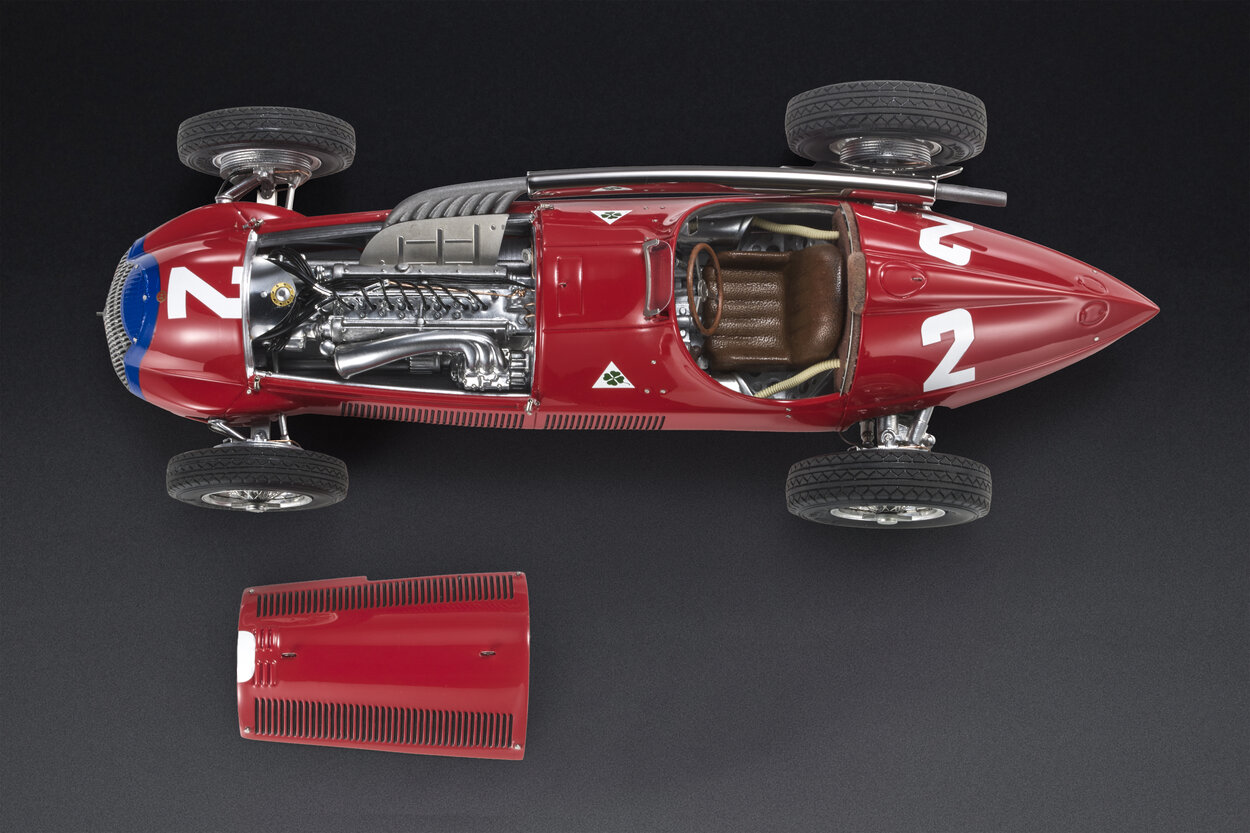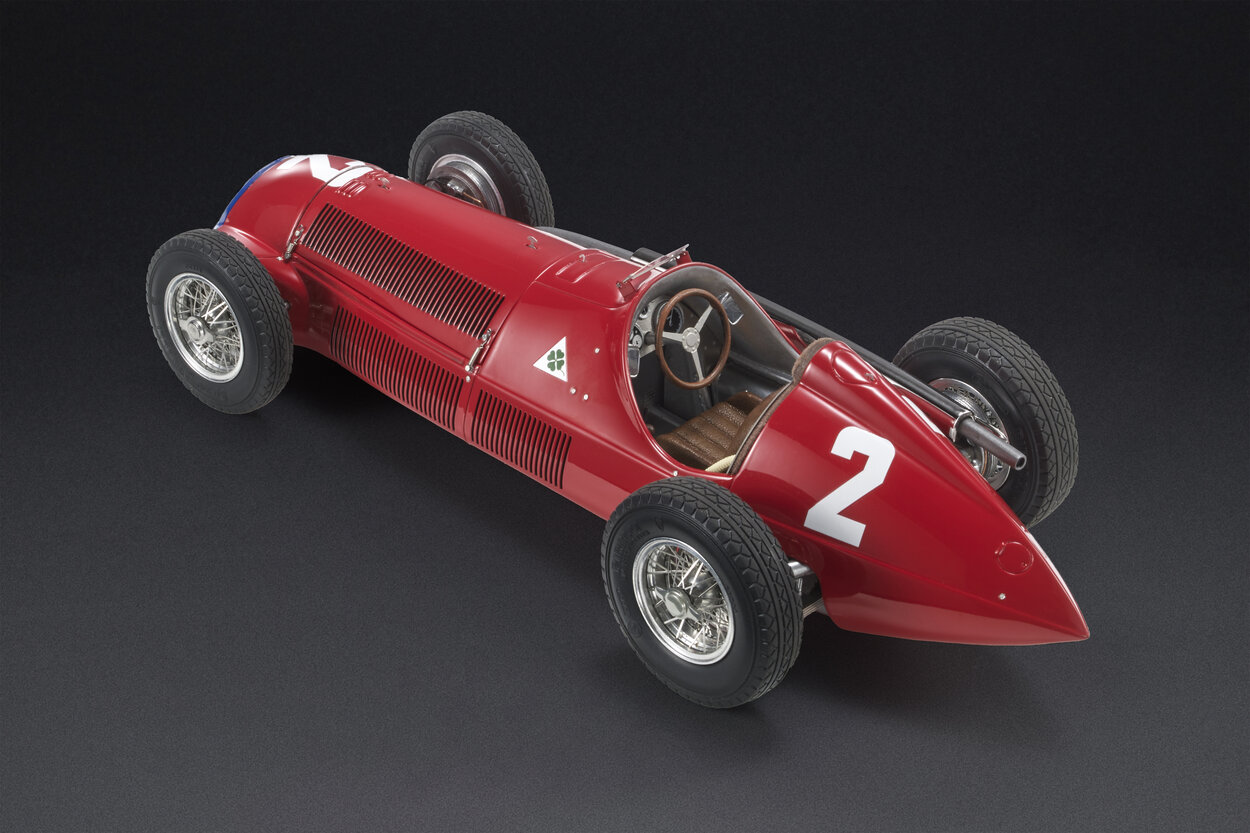Alfetta 158
It is the first world champion single-seater. But its story begins long before 1950. And among other things, it begins far from the historic Alfa Romeo factory at Portello in Milan. The Alfa Romeo 158, in fact, which would later be baptized Alfetta, was born in the workshop of the Scuderia Ferrari in Modena in the spring of 1937 by virtue of the close collaboration then in place between the two companies.
The project is entirely Alfa Romeo-based. The person in charge is Gioachino Colombo, to whom the basic idea of the car is due, and specifically, the 1.5-liter 8-cylinder engine. Alberto Massimino, another Alfa Romeo technician, mainly deals with the suspensions and gearbox. Ferrari’s technicians collaborate with Colombo and Massimino, and his mechanics assemble the car.

Drivers:
Nino Farina: Giuseppe Farina, known as Nino, is the first Formula 1 world champion. He is one of the famous Three Fs racing for Alfa Romeo that season – Farina, Fangio, Fagioli. His debut took place before the Second World War, but fame arrived precisely in 1950. In the first race of the new Formula 1 World Championship, Farina and his Alfetta are the fastest in qualifying and the first under the chequered flag. He will also win the Swiss and Italian Grand Prix.
Juan Manuel Fangio: In 1950, the Argentine ace wins one more Grand Prix than Farina – Monaco, Belgium, and France – but at the end of the season, he will have to settle for the title of vice-champion.
Luigi Fagioli: For the great champion of the Thirties, the first season of the Formula 1 World Championship only brings podium finishes. Fagioli steps onto the second step of the podium in the Grand Prix of Great Britain, Switzerland, Belgium, and France – and on the third at Monza.
Our model cars:

At the time of its birth, the 158 complies with the regulations of the voiturette category, in which less powerful cars compete compared to Grand Prix cars. But Italian companies at the time do not have the money of the Germans and have to settle for competing in a minor category – hence the nickname Alfetta, meaning little Alfa. The name 158 stands for the engine displacement (1500 cm3) and the number of cylinders (8). The gearbox is a four-speed manual. The nickname Alfetta will come over time.
The 158 makes its debut in the 1937 Coppa Ciano with a victory. It remains active until the outbreak of the Second World War. Then it returns to the track in the post-war period, and in 1950, in the first edition of the Formula 1 World Championship, it is the car to beat.

